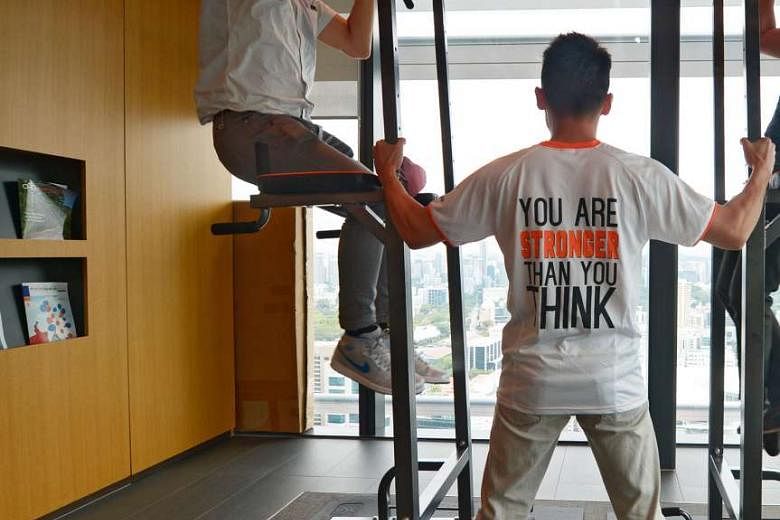Most people can do sit-ups and push-ups. But many find pull-ups nigh impossible to do. Mr John Cheah, a fitness coach at CrossFit Tanjong Pagar, gives some tips on how to conquer the problem.
Pull-ups increase grip, bicep, core and lat (muscles under the shoulder blades) strength. They are slightly different from chin-ups, he said.
Some people associate pull-ups with a pronated grip (where the palms face away from the body) and chin-ups with a supinated grip (where the palms face towards the body).
He said: "The pronated grip (pull- up) activates the lats a bit more and the supinated grip (chin-up) activates the biceps a bit more."
• Pull-up: Be patient if you have never done a pull-up before. It is a complex movement using different parts of the shoulder girdle, along with core stability and grip strength, he said.
Beginners can start by simply hanging on the pull-up bar and doing muscle activation exercises.
While hanging, they should relax their shoulders and arms, and pull their shoulder blades in without bending their elbows.
After this, you can try a deficit pull-up. Start by grabbing the bar and jumping high enough so that your chin is just over the bar, before lowering your body slowly, till the arms are fully extended.
Do not rush your progress.
"We want to train at a percentage of our maximum effort. If one struggling, kicking pull-up is all you can manage, it may be smarter to start with three repetitions of deficit pull-ups for three sets," he said.
Move on to a proper pull-up once that movement becomes easier to do.
Even if you can do an unbroken set of six pull-ups, he recommends doing three sets of four regular pull-ups followed by three to four reps of deficit pull-ups, in order to increase the body's muscle fatigue threshold.
An easier way to do pull-ups is in an inclined position. These work the lats and scapular muscles too, but in a more horizontal fashion.
With feet on the ground, a part of the body weight is supported. "You don't have to work as much as when you're doing a regular pull-up," he said.
•Patience and perseverance: How long you need to train in order to do a regular pull-up depends on many things, including your body weight, baseline strength, diet, flexibility and injuries.
Mr Cheah said those who are doing pull-ups for the first time would take about five to six months of training before being able to do one, using the above method.
"If you're overweight with little back strength, it'll be an uphill climb," he said.
But if you are serious about doing a pull-up, get help from a trainer and turn that goal into reality.
"Everyone has the potential to do a pull-up," he said.
Timothy Goh

